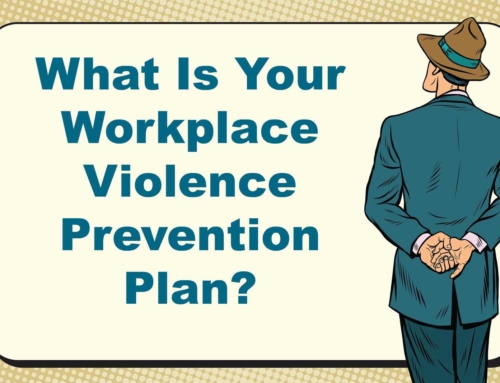Why No One Talks About Workplace Violence in Libraries
If you asked the average person to list the main hazards faced by library staff throughout the world, the response would probably be………falling books, paper cuts, back strain or eyesight problems associated to too much reading.
If you asked them an additional question such as whether they thought that library staff worked in a threatening or hostile environment, they would absolutely laugh at you. Workplace violence in a library…never!
Despite the traditional view that the public have of libraries being those nice, safe, quiet places that staff work in, there is evidence to demonstrate clearly to us that this is far from their reality. The level of aggression demonstrated by people visiting libraries has become increasingly common in recent years.
Are Library Staff Members Safe at Work?
Staff are every organization’s most valuable resource (you have probably heard me saying that a few thousand times before) and must be protected, but let’s just think about library staff and their working environment for a minute or two.
Library staff work in public facilities that are designed to be highly informal, highly welcoming and highly accessible.
When we think about the various sources of workplace violence having all three of those facets, libraries represent an outright bonanza for the perpetrators of violence and a worst possible scenario for the victims of workplace violence.
Some of the issues that create difficult working environments (and therefore can develop into aggressive behaviour) for library staff include:
- Evenings when locals often use libraries as places just to ‘hangout’
- Poorly lit and distant car parking arrangements for library staff
- Opening times of the libraries which conflict with user convenience
- Limits on book loan periods or the number of times that books could be renewed
- The issue of fines generally
- The requirements surrounding various forms of identification required to use the library book loan system
- A perceived shortage of books / new material
- Users of the library not being familiar with the procedures and what is required of them
Learning to cope with and deal with the anger and violence does not mean that staff working in our libraries are required to put up with it.
What we do need to think about is how to find positive and proactive ways of dealing with those situations and minimizing the likelihood of them happening in the first place.
As you read these suggestions, they not only apply to libraries…but to every public facility where the public have unfettered and unscreened access to staff.
Suggestions for a Safer Library Environment
- The physical environment and the design of the workplace itself The physical layout and design of a workplace plays a significant role in increasing or decreasing the risk of violence towards staff. There is a protocol that is taught within the policing and security industries termed Crime Prevention Through Environmental Design (CPTED) which speaks to this specific issue. It is amazing what a few simple changes can achieve.
- The organizational culture and procedure Having a supportive management attitude to help the front line staff deal with those difficult situations is incredibly important. Having effective two-way communication throughout the library staff and management, will allow for discussion to occur and concerns to be raised in a safe and supportive environment. A review of current practises, hours of operation, staffing levels and other organizational issues should always be evaluated to examine whether they could possibly add to the problems faced by staff.
- Issues surrounding customer care We know from other public environments that customers and clients tend to get frustrated when they do not know exactly what is expected of them in those facilities. The displayed information should be well-presented, offer intelligible guidelines on joining procedures and loan terms and clear guides to finding information within the library itself. Signage goes only so far in publicizing information about procedures and practices and people get easily overwhelmed by signs, signs and more signs. The staff must be trained to demonstrate superior customer service skills using empathy, active listening, appropriate tone and customer centred procedures. All this while continually displaying a caring demeanour and attitude.
- Reporting procedures The fact that we (the public) think of libraries as safe and quiet places is because of a severe under reporting. Within library systems, there needs to be an increased understanding that by providing an effective reporting system, this will in turn encourage staff to use it as long as they feel it will be useful. That feeling can only come from the top and clear support and encouragement for staff to document situations when they occur. Only by actually knowing that something has happened, can an organization respond to it. But they have to show that they care enough in the first place.
- Training for staff Using my large and wide brush, I am inclined to think that the general public thinks that libraries do not attract the Jean-Claude Van Damme type of personalities to work there. Assertiveness is not necessarily Job #1. Therefore, staff should be trained/reminded in the importance of: to remain calm, acknowledging a person’s anger and frustration, focus on the cause of the anger/frustration, avoid taking the anger/frustration personally, avoid power struggles with the person, offer the person choices, listen to them, separate the angry person from any audience, avoid any physical response and always have an escape route and the ability to call for assistance.
None of these are more important than another. They ALL need our attention if libraries want to truly make a difference in the feelings of safety that their staff need.
Then perhaps we can talk about it a little more freely!







Leave A Comment